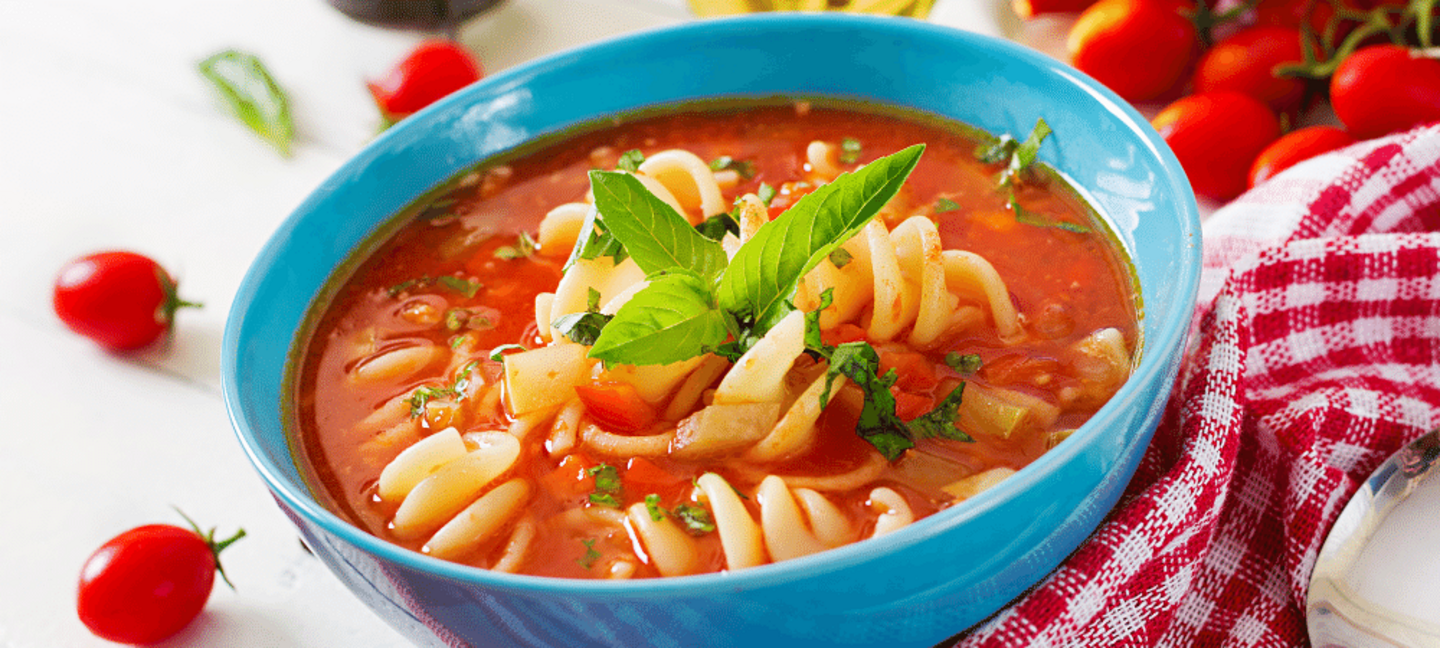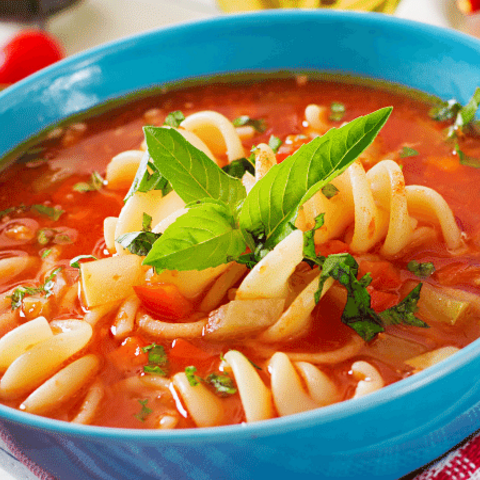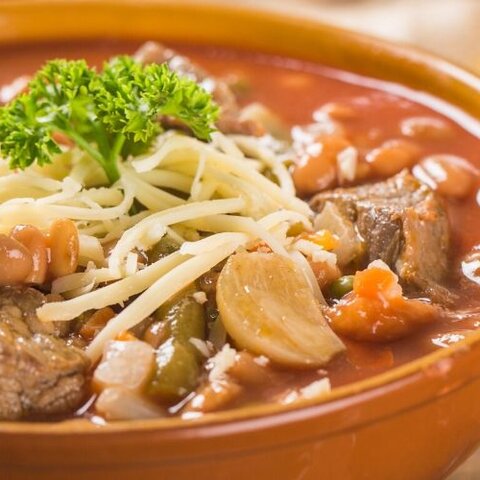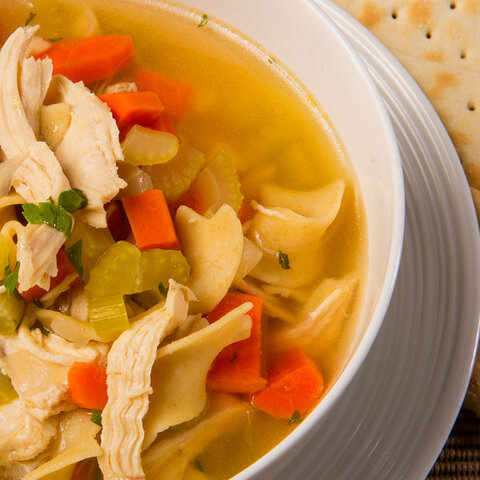
What's better on a cold winter day than a warm bowl of soup? Soup can be nutritious, easy to prepare, and inexpensive. It can be great hot or cold, prepared with minimal clean-up, only needs one pot, and the combination of ingredients is unlimited. Soup is a great dish for a variety of palettes and can be tailored to be spicy, savory or sweet. January is National Soup Month, a good time to think about how soup can fit into a healthy eating plan.
Follow these helpful tips for making soup delicious and nutritious.
- Soup for every season. As appetizers, side dishes, or main dishes, soups help celebrate the bounty of the four seasons. Soups can be thick and hearty, smooth and creamy, or savory. They can be served hot, such as minestrone, or cold, such as mango and cucumber soup.
- Be sodium savvy. To keep soups tasty and healthy, use low-sodium broth, stock, or soup base for the foundation. Experiment with flavorful herbs and spices in place of salt. The most effective replacements are savory flavors with "bite," such as black pepper, garlic powder, curry powder, cumin, dill seeds, basil, ginger, coriander and onion. Use minced or powdered garlic and onion rather than their salt form. When substituting minced or powdered garlic and onion for the salt version, use about half as much.
- Make healthier choices with Nutrition Facts Labels. When buying canned soups, use the Nutrition Facts Label to help choose ones with lower sodium levels. Foods with 140 milligrams (mg) of sodium or less per serving can be labeled as low-sodium foods. Claims such as "low in sodium" or "very low in sodium" on the front of the food label can help identify foods that contain less salt.
- Choose healthier substitutions. Soup can be a healthy, inexpensive meal. Keep soups lower in fat and calories by using cheese, sour cream, or bacon sparingly as a topping or garnish. Or choose healthier substitutes like reduced-fat shredded cheese, low-fat sour cream, non-fat plain yogurt, or turkey bacon. Substitute a whole-grain product for a refined product – such as using whole-wheat noodles, barley, or brown rice in soups and stews.
- Cook once, eat twice. Homemade soups can be made ahead of time and in large quantities. Eat refrigerated soup within three to four days or freeze it. Don't let soup set at room temperature for more than two hours. To speed cooling, store soups in shallow containers. When serving a second time, bring to a boil.
During National Soup Month and beyond, experiment with different recipes and ingredient substitutions for healthier soups. Find ways to vary your veggies with warm soups in the colder months, and focus on fruits with chilled soups in the warmer months.

White Chicken Chili
Download Handout Spanish Handout- 2 Tablespoons olive, canola or vegetable oil
- 1 onion, scrubbed with clean vegetable brush under running water, finely chopped
- 1 (4 ounce) can chopped green chilies, drained
- 2 (15.8 ounce) cans great northern beans, drained and rinsed
- 1 (14.5 ounce) can low-sodium chicken broth
- 2 teaspoons garlic powder
- 1/2 teaspoon pepper
- 2 teaspoons ground cumin
- 1 ½ cups cooked chicken, cubed
- 4 ounces Monterey Jack cheese, shredded
Directions:
- Wash hands with soap and water.
- In a large saucepan, heat oil. Add onion and cook until tender.
- Add green chilies, beans, chicken broth, garlic powder, pepper, ground cumin, and chicken. Bring to a boil.
- Reduce heat and simmer for 10 minutes or until desired thickness.
- Serve hot, topped with cheese.
- Store leftovers in a sealed container in the refrigerator for up to four days.
Nutrition Information:
- Serving Size (1/6 of recipe):
- Calories: 290
- Total Fat: 13g
- Saturated Fat: 4g
- Cholesterol: 45mg
- Sodium: 510mg
- Total Carbohydrates: 23g
- Fiber: 6g
- Protein: 21g
- Calcium: 15%
- Iron: 10%
- Potassium: 10%
Source:
- U.S. Food & Drug Administration. (2020). Sodium in Your Diet. Accessed at: https://www.fda.gov/food/nutrition-education-resources-materials/sodium-your-diet.
- Better Kid Care. (2014). Soup season. Penn State Extension.
- Mellendorf, C. (2017). Recipe Rehab: Healthier Soups. University of Illinois Extension. Accessed at: https://extension.illinois.edu/blogs/know-how-know-more/2017-12-31-recipe-rehab-healthier-soups
- National Food Service Management Institute. (2014). Culinary Techniques for Healthy School Meals: Preparing Soups. The University of Mississippi, ET80-14(PW).





